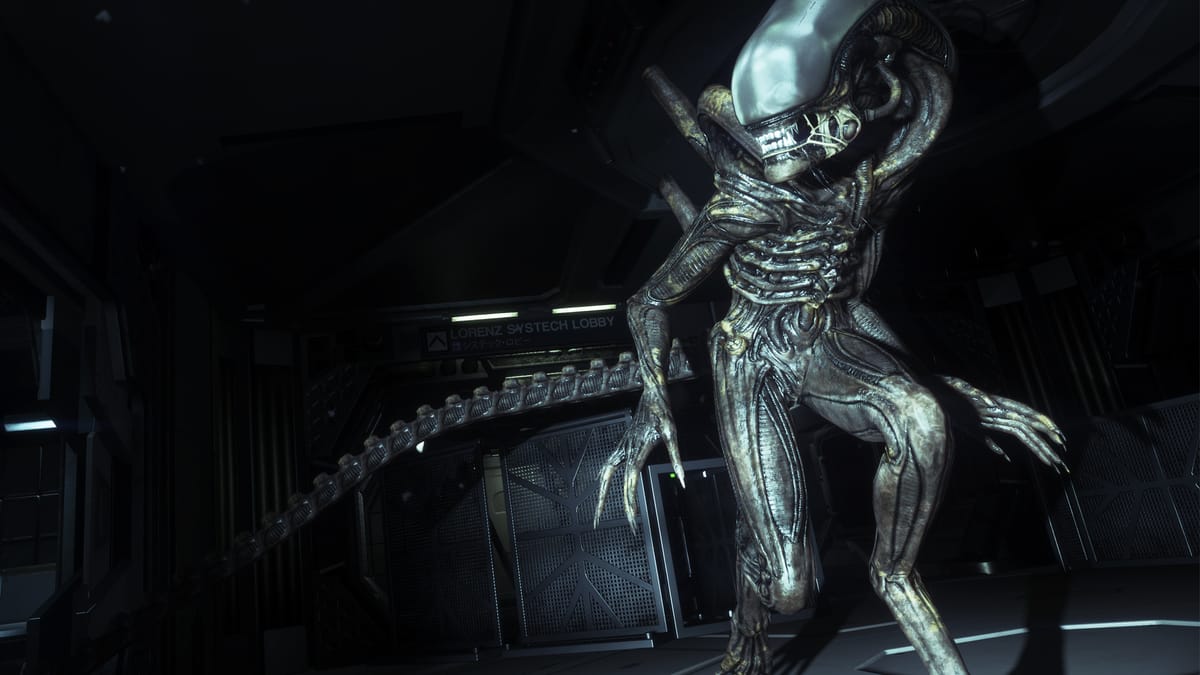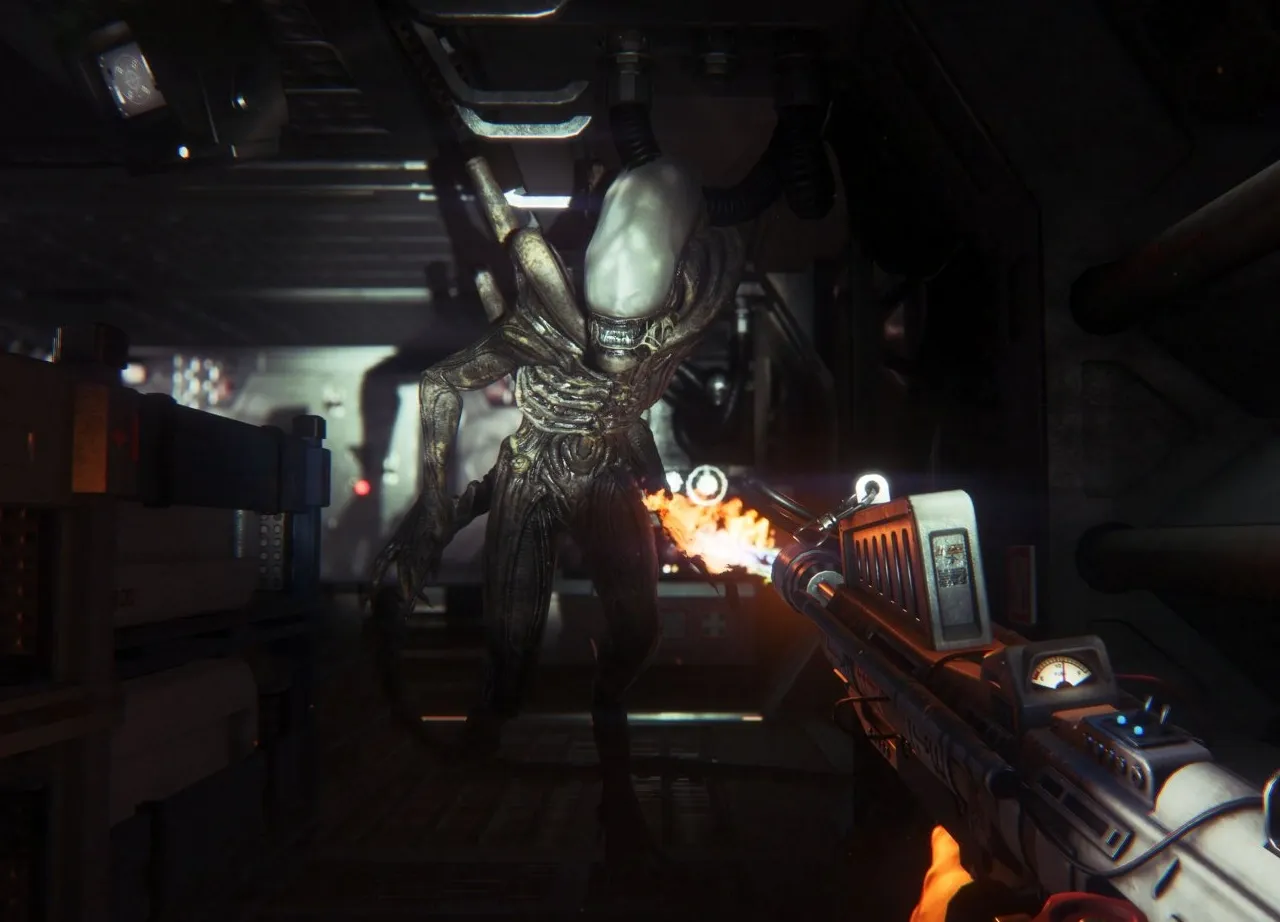Alien Isolation: The Dual-Brain Mastery Behind the Xenomorph
Alien: Isolation users a unique "two-brain" system to create a more terrifying experience. Isn't that great?

I seem to consistently develop a fondness for games that are unlikely to receive a follow-up.
Alien: Isolation is one such game.
Even with its flaws, its meticulous attention to detail and chilling atmosphere is something to behold.
Creative Assembly really did craft an unforgettable experience, a real love letter to the source material, making each encounter with the Xenomorph, whether it's the first or the fiftieth time, gripping.
I want to hug each member of the Creative Assembly team and just let them know they did good. Like, real good. They knocked it out of the Sevastopol and then some.
"Yeah, but another Alien: Isolation article, Chris? Why this time?"
Well, I'll tell you why.
I recently discovered something about the AI mechanic of Isolation that doesn't take away from the experience of the creature, but rather, makes the experience somehow even creepier.
It has "two brains". Metaphorically speaking. The AI uses both to ensure the player gets the optimal brief-browning experience.
There's a lovely read on escapistmagazine.com from Chris McMullen, and I'd recommend you give it a go, as most of what I'm talking about here has originated from that article.

Chris goes on to say, "So how does Alien: Isolation cheat? There’s a magnificent technical explanation on Gamasutra from Tommy Thompson, director of AI and Games. But to break it down, the alien has (as one Reddit user described it) two brains."
From my admittedly limited understanding, the twin brain concept, which has been discussed long since I penned this article, suggests that the Xenomorph exhibits a form of life and responsiveness depending on the player's actions.
Creepy. More so when you consider the alien can't always see you, but it is aware of your presence because of decisions you make in the game.
It's clever and is designed to add tension, and unpredictability, as you sneak your way around dimly lit corridors and dark shafts. The alien simultaneously knows and doesn't know where you are at all times.
Confused? Read on.
Hunting You Down
Enemies in games are often "scripted" – with their actions being predetermined and following a set pattern.
While this approach has been a staple in game design, providing structure and predictability, it can sometimes compromise the immersive experience. In stealth games, where the thrill lies in being hunted down, scripted enemy behaviour can make encounters feel rigid and rehearsed.
The lack of dynamic responses can break the illusion of a living, breathing game world.
"Game design is all about figuring out how to craft the experience you want from the tools you have available." - Ask a Game Dev
The alien's relentless pursuit is not merely a result of scripted events; rather, it stems from a fascinating "dual-brain" system designed by the game developers at Creative Assembly.
Adding an extra layer of unpredictability and tension to the player's experience, this innovative approach to artificial intelligence is one of the reasons why gamers often highlight Alien: Isolation for its exceptional intensity.
Let's break it down.
The Xenomorph's first brain serves as a constant watchdog, keeping a vigilant eye on the player's location throughout the game.
This doesn't mean that alien is cognizant of where you are, as cognizant as an AI can be, but rather parameters are set to ensure the game doesn't get... well, too boring.
However, it's the second brain that adds a nuanced dimension to the creature's hunting strategy.
At the beginning of each level, this second brain is blissfully unaware of the player's whereabouts. Instead, it embarks on a fresh exploration of the environment.
What makes this system particularly intriguing is that it mirrors the Xenomorph's adaptive and intelligent nature.
But here's the twist – it's not stumbling blindly. The first brain subtly feeds it clues, like breadcrumbs, to narrow down the potential hiding spots.
These clues, such as "the player is in a room with a glass partition," become the building blocks for the second brain to gradually eliminate possible locations.
Spend too much time in one place, and you're unwittingly providing more ammunition for the Xenomorph's relentless pursuit. The game becomes a high-stakes cat-and-mouse, where the player's every move is being scrutinised and analysed
What makes this system particularly intriguing is that it mirrors the Xenomorph's adaptive and intelligent nature.

After collecting enough clues, the second brain assembles a unique profile of your location, making it increasingly likely that you will be discovered.
The precision of this method ensures that when the Xenomorph finally catches up, it's not by sheer luck but through a meticulous process of deduction. You know, how you'd expect the alien to hunt its prey down.
Terrifying.
So, the next time you find yourself cowering in a ventilation shaft or lingering in a shadowy corner, remember – the Xenomorph isn't just a scripted adversary; it's a cunning predator with a two-brained strategy, making every encounter a thrilling and unpredictable dance between survival and the relentless pursuit of the unknown.
Can you imagine the insanity of Alien: Isolation 2 if Creative Assembly got a crack at it?
We Alien fans can only dream.




Comments ()